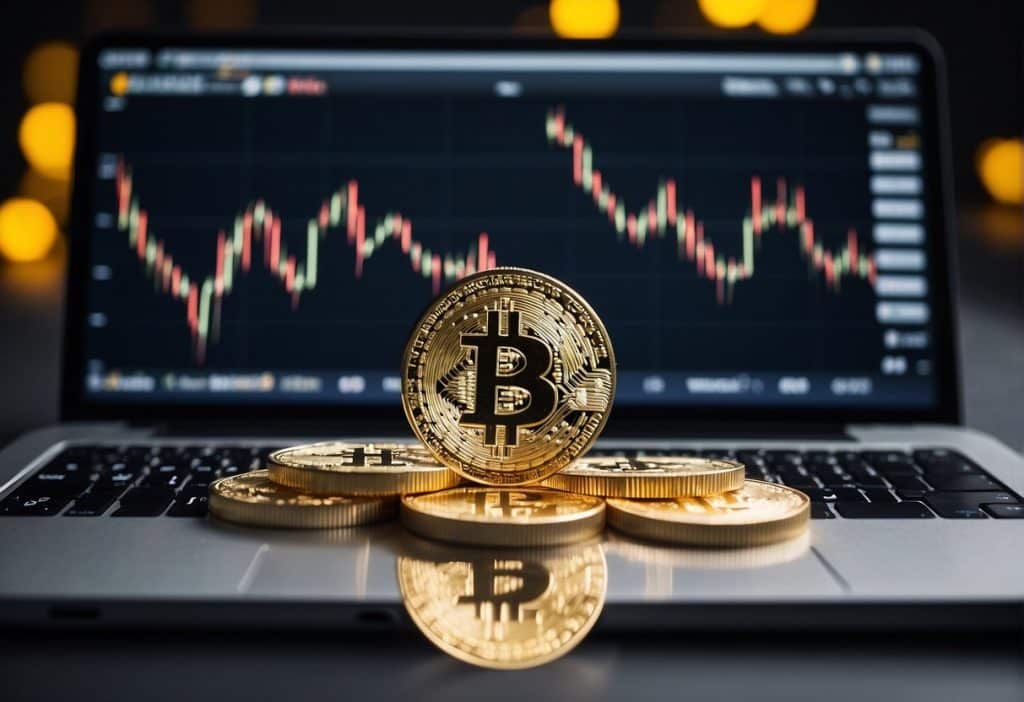Binance, the world’s largest cryptocurrency exchange, periodically revises its listings to maintain a high standard of quality and compliance on its trading platform. These revisions often lead to certain cryptocurrencies being delisted. This process serves to protect users and enhance the reputation of Binance by ensuring that only tokens which meet their stringent criteria remain available for trading.

The delisting of a token can have widespread implications for users holding that asset, the Binance ecosystem, and the broader cryptocurrency markets. It typically affects traders by limiting the liquidity of the token and can also signal to the market concerns over security, transparency, or regulatory compliance.
Key Takeaways
- Regular delisting from Binance aims to maintain a secure and compliant trading environment.
- Delisting affects token liquidity and may reflect broader market concerns.
- The process underscores the importance of understanding cryptocurrency risks.
NOT YET A BINANCE USER?
Join today with the Binance Referral Code for exclusive benefits or read our Binance Review to learn why Binance is the right exchange for you!
GET UP TO 50% OFF TRADING FEES WITH THE CODE “WUPBLUYN”
Overview of Binance Delisting
In the dynamic world of cryptocurrency trading, Binance occasionally removes certain cryptocurrencies or trading pairs from its exchange. This process, known as delisting, is critical for maintaining the integrity and quality of the trading platform.
Understanding Delisting
Delisting refers to the action taken by an exchange like Binance to remove a cryptocurrency or a trading pair from its platform. This can occur for a variety of reasons, all aimed at protecting the interests of the exchange’s users and the integrity of the trading environment. Once a token or a pair is delisted, you are no longer able to trade it on the exchange.
Criteria for Delisting
Binance follows a stringent review process before deciding to delist a token. This process evaluates multiple aspects of a project to ensure they meet Binance’s standards.
Here are some factors that Binance may consider:
- Team Commitment: The dedication of the project team to their product.
- Development Activity: Level and quality of ongoing work on the technology.
- Trading Volume and Liquidity: Sufficient user interest and the ability to buy or sell without large price fluctuations.
- Network Stability: Protection against outages and cyberattacks.
- Safety: Assurance that the network or smart contracts are secure.
Your project’s adherence to these criteria is fundamental to remain available for trading on Binance.
Implications for Users

When Binance delists a cryptocurrency, it significantly impacts how you interact with the asset on the platform. Here are the key implications for trading activity and withdrawal options.
Impact on Trading
Once Binance announces the delisting of a crypto asset, you will notice immediate changes in your trading experience. Here’s what typically happens:
- Trade Suspensions: Trading pairs involving the delisted asset will be suspended. You must close any open trades before the given deadline, or they will be automatically closed by the system.
- Price Volatility: Announcement of delisting can lead to increased price volatility of the affected asset. You should review your investment objectives as this may affect your trading strategy.
Withdrawals After Delisting
Binance provides a withdrawal period post-delisting, during which you’re allowed to withdraw your funds. The specifics are as follows:
- Withdrawal Period: Typically, the exchange allows for withdrawals of the delisted coins for a certain period after the trading has been halted. Ensure to withdraw any holdings in the delisted assets within this timeframe.
- No Further Support: After the withdrawal deadline, Binance ceases to support the delisted asset. This means you will no longer be able to withdraw these funds from the exchange, and securing your assets will be solely your responsibility.
Remember that Binance’s decision to delist an asset does not reflect on its merits or value outside of the exchange. Always seek financial advice and consider your own research while dealing with investments impacted by such events.
Binance’s Delisting Process
In Binance’s pursuit of maintaining a sustainable crypto ecosystem, the delisting process is a critical tool to ensure the reliability and quality of its trading environment. You should be aware that decisions are based on a comprehensive review to uphold the platform’s high standards.
Delisting Announcement
When Binance determines a cryptocurrency no longer meets its standards, they issue a public communication to inform users of the upcoming delisting. This includes providing specifics, such as the factors contributing to the decision. Common reasons for delisting can include but are not limited to:
- Team Commitment to the Project
- Level and Quality of Development Activity
- Trading Volume and Liquidity
- Stability of the Network
Note: The information regarding which assets will be delisted is typically shared in advance, to prepare users for the transition.
Transition Period
Once Binance announces the delisting, there is a transition period before the delisting is fully effective. This period allows you to make any necessary adjustments, including the closure of trades and withdrawal of the affected assets. Details of the transition period are outlined as follows:
- Last Date for Trading: Includes the final day trades can be executed.
- Withdrawal Deadline: Specifies the last date for withdrawing the delisted assets from the platform.
Ensure that you adhere to the communicated timeline to prevent any potential loss of assets. Binance’s aim is to streamline this period to minimize disruption in your trading experience.
Regulatory Compliance
In this section, you will gain an understanding of Binance’s approach to maintaining regulatory compliance through its operations and strategic decisions, particularly concerning the delisting of certain cryptocurrencies.
Legal and Regulatory Factors
Binance, one of the largest cryptocurrency exchanges globally, makes decisions based on a complex landscape of legal and regulatory factors. This involves a meticulous evaluation of varied regulation landscapes across multiple jurisdictions. For instance, in countries like the United States, Canada, Singapore, Japan, Korea, Australia, and New Zealand, the exchange must align its operations with the requirements set by local authorities such as the Financial Conduct Authority (FCA) in the UK, or equivalent regulatory bodies in other countries.
Compliance with Local Laws
Your understanding of Binance’s compliance is incomplete without recognizing the importance of local law adherence. The exchange ensures that its services and operations do not contravene local legal requirements, tailoring its platform to meet the specific demands of residents within each jurisdiction. For instance, Binance must comply with the Financial Ombudsman Service and Financial Services Compensation Scheme regulations to protect local residents. Here’s how Binance’s regulatory compliance varies by region:
| Country / Region | Regulatory Body | Key Compliance Factor |
|---|---|---|
| United States | SEC, CFTC | Must adhere to federal securities and commodities regulations |
| Canada | IIROC, CSA | Complies with provincial securities laws |
| Singapore | MAS | Clear abidance by Payment Services Act for crypto businesses |
| Japan | FSA | Stringent anti-money laundering and consumer protection laws |
| Korea | FSC, FSS | Strict real-name account trading policies |
| Australia | ASIC | Must comply with the Australian Securities and Investments Commission’s guidelines |
| New Zealand | FMA | Obligated to adhere to Financial Markets Authority regulations |
Through meticulously following local regulations, Binance aims to balance the integrity of its operations with the need to ensure the security and compliance of its financial practices.
Understanding Cryptocurrency Risks
In the context of Binance delistings, comprehending the inherent risks in cryptocurrency investments is essential for informed decision-making. This section highlights the importance of market and liquidity risks, along with the vulnerability associated with the project itself.
Market and Liquidity Risks
Your exposure to market risk involves the potential of facing losses due to the fluctuating values of cryptocurrencies. Liquidity risk is relevant if there’s inadequate trading volume, making it challenging to buy or sell without affecting market price.
| Risk Type | Description | Example | Risk Warning |
|---|---|---|---|
| Market Risk | Potential for investment value to decrease due to market conditions. | A broad market downturn affects most assets. | Fluctuations could result in significant losses. |
| Liquidity Risk | Difficulty in trading an asset without impacting its price. | Delisting leads to a sudden drop in trading venues. | Reduced liquidity can increase the impact of market volatility. |
Project Risks
The legitimacy and ongoing development activity are critical for the sustainability of any cryptocurrency project. You should scrutinize the level of active development as it reflects the commitment to addressing issues and innovating. Additionally, smart contract stability is paramount, as vulnerabilities here can lead to irreversible losses.
- Project Validity: Ensure the project has a clear purpose and a committed team.
- Smart Contract Safety: Regular audits and developer activity can mitigate the risk of flaws in code, which might result in loss of funds.
Binance’s Ecosystem and Services
Binance has established a robust ecosystem to facilitate sustainable growth within the cryptocurrency space, offering a suite of tools and services. As a leading trading platform, Binance provides you with extensive resources for cryptoasset management and trade execution.
Supporting Sustainable Growth
Binance prioritizes long-term development through its initiatives to support sustainable growth in the crypto market. Simple Earn and Nest Services Limited are part of these efforts, focused on providing you with opportunities to grow your investments while contributing to the overall stability of the ecosystem. Your contributions to the ecosystem are enhanced through these instruments, providing a multifaceted approach to asset growth and retention.
- Simple Earn: A feature that allows you to earn interest on your idle cryptocurrency assets by participating in different yield-generating products.
- Nest Services Limited: A subsidiary created to handle specific services within the Binance ecosystem, ensuring dedicated support and development for key areas of growth.
Tools and Services Offered
Binance’s platform encompasses a wide array of tools and services designed to cater to your cryptoasset needs. From managing trade orders to utilizing its native stablecoin VAI, each service is tailored to provide you with a clear path to participate in the crypto market. Here’s a brief overview:
- Trade Orders: The platform ensures a seamless trading experience with real-time execution of your trade orders, enabling efficient market participation.
- Crypto Services: You have access to various services, including spot, margin, futures trading, and a secure wallet for your assets.
- Stablecoin (VAI): A Binance-issued algorithmic stablecoin tied to the value of the US Dollar, which you can use for trade or as a hedge against market volatility.
The careful integration of these services ensures that you can confidently engage with the platform, whether for trading or asset management. Binance’s commitment to providing comprehensive tools and services upholds its position as an influential entity in the cryptocurrency market.
Impact on Cryptocurrency Markets

Following the delisting actions by Binance, you may observe shifts in trading volumes and investor sentiments which contribute to the alterations in the market dynamics.
Trading Volume and Market Dynamics
Your understanding of the market’s response to delistings should account for immediate changes in trading volume. Typically, delistings lead to a reduction in the liquidity of the affected digital assets, making it harder for you to execute trades without impacting the price. This is particularly evident if the asset is not widely traded on other platforms. Such shifts may prompt a reallocation of capital within the crypto ecosystem as traders seek alternatives, potentially increasing the trading volume and decreasing market risk for major cryptocurrencies like Bitcoin (BTC), Ethereum (ETH), and Tether (USDT).
| Cryptocurrency | Pre-Delisting Daily Trading Volume | Post-Delisting Daily Trading Volume |
|---|---|---|
| Monero (XMR) | $1 billion | $700 million |
| Amp (AMP) | $500 million | $300 million |
Investor Sentiment
When evaluating how delistings influence your investment objectives, consider the psychological impact on investor sentiment. Removal of a cryptocurrency from a major exchange like Binance is often perceived as a negative endorsement, thereby influencing your confidence to hold or trade the affected asset. Such events may lead you to reassess the market risk associated with that particular digital asset, potentially prompting a broader discussion on the regulatory landscape of cryptocurrencies. This can have a ripple effect through the market, affecting not just the delisted asset, but also the perception and value of other cryptocurrencies.
Security and Transparency
As Binance navigates the complexities of operating within the global cryptocurrency market, two critical pillars ensure its alignment with both industry standards and regulatory expectations: security and transparency. Your understanding of these factors is essential when engaging with the platform, as these aspects directly influence the trust and reliability of the exchange.
Project Due Diligence
When it comes to Project Due Diligence, Binance employs a rigorous evaluation process to maintain a secure trading environment for you. Here’s a glimpse into the criteria they consider:
- Commitment of team to project: They investigate the dedication and track record of project teams to mitigate the risks of abandonment or fraudulent conduct.
- Development activity: The level and quality of ongoing development are scrutinized to ensure the project’s longevity and stability.
- Network stability: They analyze the resilience of a project’s network to attacks, assessing both technical aspects and security protocols in place.
Transparent Communication ensures that you remain informed about the crucial decisions affecting potential investments. When Binance delists a token, they strive to clearly communicate the reasoning to users, which is in line with their terms of use and privacy policy. This approach aims to foster an environment where you are aware of the changes and can plan accordingly.
Transparent Communication
Binance emphasizes clear, straightforward communication with its users regarding delisting decisions. Here’s how they ensure you are kept in the loop:
- Advance Notice: Binance provides you with timely information ahead of any delisting actions.
- Detailed Explanations: The firm outlines the specific reasons behind the delisting, which could include observations of irregularities or shifts in regulatory requirements.
By staying committed to these practices, Binance reinforces its image as a transparent platform prioritizing your security and trust.
Technological Considerations
When Binance evaluates cryptocurrencies for delisting, it meticulously assesses technological aspects, particularly blockchain performance and smart contract stability. Understanding these factors ensures a sustainable crypto ecosystem and guides your investment decisions.
Blockchain and Smart Contract Evaluation
Blockchain Performance: The health and stability of a blockchain are crucial for cryptocurrencies. Binance reviews factors such as:
- Network security against attacks
- Consensus mechanism effectiveness
- Transaction per second (TPS) rate
Smart Contract Stability: Smart contracts govern many digital assets on the blockchain. Evaluation criteria include:
- Audit history
- Frequency of bugs or issues
- Updates and maintenance frequency
Blockchain and smart contract evaluations are critical in preventing the cessation of trading due to technical complications.
Future of Digital Assets and Web3
Digital Assets: The evolution of digital assets is influenced by technological advancements. Binance considers:
- Project Continuity: The development team’s commitment and level of active development.
- Market Response: Liquidity and trading volume as indicators of asset health.
Web3 Outlook: The transition to Web3 encompasses a generational shift in the internet’s structure, integrating blockchain and cryptocurrencies to create user-centric platforms. Binance anticipates how assets will align with the Web3 paradigm, considering aspects like interoperability and decentralization.
By scrutinizing the technological underpinnings of each project, Binance aims to foster a secure and reliable trading environment for your crypto investments.
Frequently Asked Questions

Understanding the rationale and impact of cryptocurrency delistings on Binance is crucial for users to navigate their investments confidently.
What are the criteria for a cryptocurrency to be delisted from Binance?
Binance evaluates multiple factors when assessing a cryptocurrency for delisting. These include the commitment of the team to the project, ongoing development activity, trading volume, and liquidity. Network stability and security are also scrutinized to protect users.
How will Binance users be affected by a coin delisting?
When Binance delists a coin, it ceases trading and may also disable deposits and withdrawals after a stipulated period. This action requires you to adjust your portfolio, potentially converting the delisted coin into other cryptocurrencies or withdrawing it if possible.
Which cryptocurrencies has Binance announced will be delisted and when?
Binance publicly announces delistings and the effective dates through its official channels. For instance, in a recent update, Binance.US stated that it would delist the stablecoin BUSD on December 14, 2023.
What steps should I take if a cryptocurrency I hold is being delisted from Binance?
If you hold a cryptocurrency that is being delisted, you should trade it for another currency on the platform before the delisting date. Ensure to keep tabs on official announcements for specific instructions about the delisting process.
How can I stay updated on future delistings from Binance?
Stay informed on future delistings by subscribing to Binance’s official announcements via their website or following their social media profiles. This proactive approach ensures you always have the latest information.
Does Binance provide explanations for the delisting of certain cryptocurrencies?
Yes, Binance typically offers explanations for delistings, addressing factors such as compliance with regulatory standards and performance metrics. However, some reasons might not be disclosed due to confidentiality or regulatory considerations.
